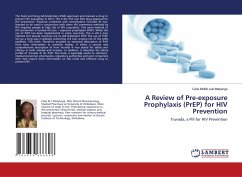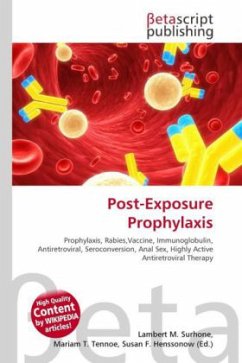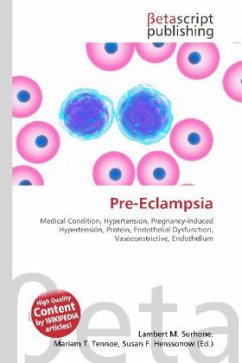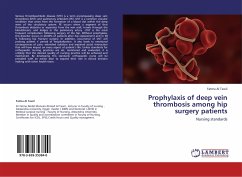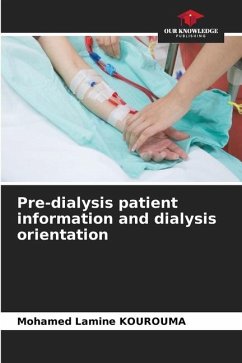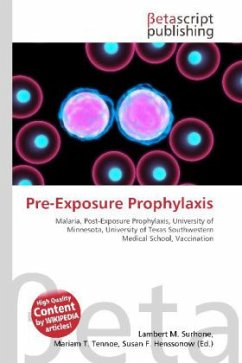
Pre-Exposure Prophylaxis
Versandkostenfrei!
Versandfertig in 6-10 Tagen
26,99 €
inkl. MwSt.

PAYBACK Punkte
13 °P sammeln!
Please note that the content of this book primarily consists of articles available from Wikipedia or other free sources online. Pre-exposure prophylaxis is any medical or public health procedure used before exposure to the disease causing agent, its purpose is to prevent, rather than treat or cure a disease. An example is the use of medication to prevent malaria. Most commonly, pre-exposure prophylaxis refers to an experimental HIV-prevention strategy that would use antiretrovirals to protect HIV-negative people from HIV infection. PrEP is not proven to work; in the strategy that is currently ...
Please note that the content of this book primarily consists of articles available from Wikipedia or other free sources online. Pre-exposure prophylaxis is any medical or public health procedure used before exposure to the disease causing agent, its purpose is to prevent, rather than treat or cure a disease. An example is the use of medication to prevent malaria. Most commonly, pre-exposure prophylaxis refers to an experimental HIV-prevention strategy that would use antiretrovirals to protect HIV-negative people from HIV infection. PrEP is not proven to work; in the strategy that is currently being tested, HIV-negative people would take a single drug, or a combination of drugs, with the hopes that it would lower the risk of infection if exposed to HIV. Along with AIDS vaccines and microbicides, PrEP is one of the experimental HIV prevention strategies being tested in clinical trials today. Studies of PrEP strategies in non-human primates have shown a reduced risk of infection among animals that receive ARVs prior to exposure to a simian form of HIV. A 2007 study at UT-Southwestern (Dallas) and the University of Minnesota showed PrEP to be effective in "humanized" laboratory mice.



